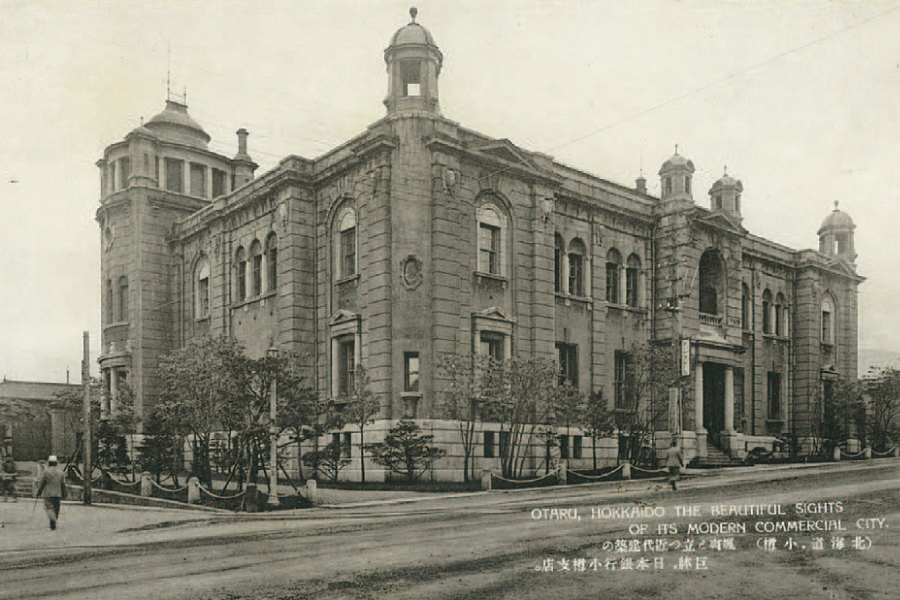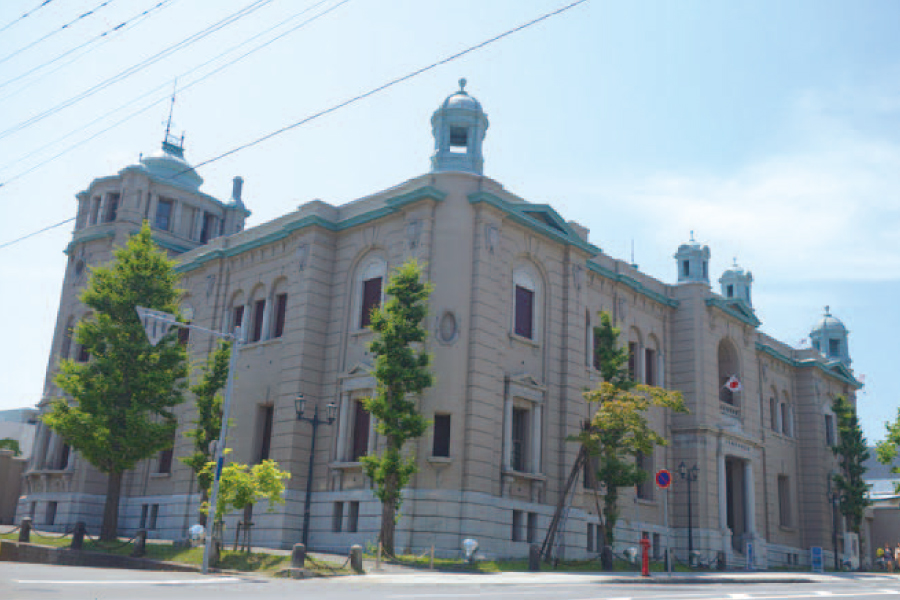
The Bank of Japan Otaru Branch, an imposing modern structure, shortly after its completion

2018 Bank of Japan Otaru Museum
The Bank of Japan’s Otaru Branch building was completed in 1912 by one of Japan’s leading architects with ornate details and construction methods new at the time. The building was designed to reflect Otaru’s financial power in the early twentieth century and is now open as a museum. Photographs and scale models explain the history of Japan’s currency system and Otaru’s economic growth.
The elegant Renaissance Revival building was designed by renowned architect Tatsuno Kingo (1854–1919) and his protégé Nagano Uheiji (1867–1937). Tatsuno was one of Japan’s most famous architects at the time and is best remembered for designing the Bank of Japan Head Office (1896) in Tokyo’s Nihonbashi and the red brick Marunouchi building of Tokyo Station (1914).
The symbol of the Bank of Japan, a stylized yen motif, is repeated throughout the interior in plaster moldings. The motif is printed on Japanese banknotes to this day. The building’s brickwork exterior is covered with cement to resemble stone and protect the bricks from rain and snow. The building has four domes along the roof on the north side, and a four-story watchtower overlooking Otaru Port on its southeast corner. Entry to the museum is free.
more Click here for the map